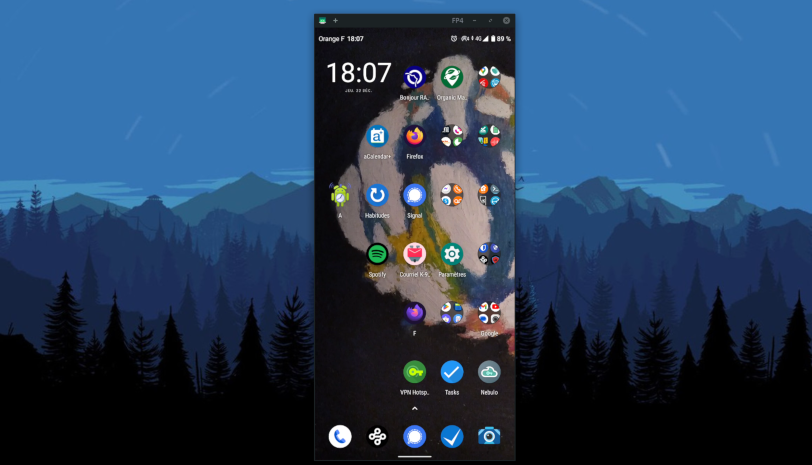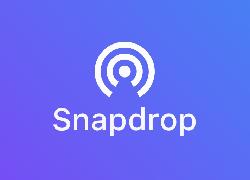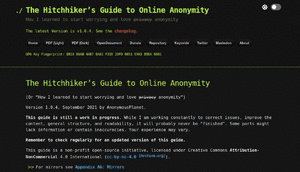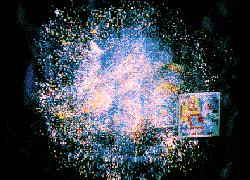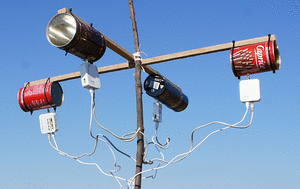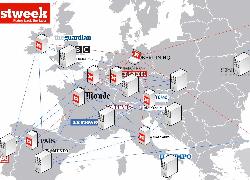J'ai un dongle USB <-> Ethernet
https://plugable.com/products/usb3-e1000
Quand on débranche/re.branche il n'est pas reconnu...
Comment faire pour que linux le reconnecte (sans redémarrer) ??
Après installation (Make) de https://github.com/jerome-pouiller/ioctl
Automating the reset {cf. lien_bulle} is working !!!!
( reconnu dès que re.branché )
....
Sinon on peut faire :
- On récupère le DBUS de l'adaptateur ( AX88179 )
- On le reconnecte
- On récupère le DBUS de l'adaptateur ( AX88179 )
À la main
lsusb | grep AX88179
# ==> GET ... 0XX ... 0YYPseudo-automatisation :
J'utilise une fonction "regex1" trouvée sur internet
https://stackoverflow.com/a/14229597
pour récupérer le...
AX88179_BUS et AX88179_DEV : 0XX ... 0YY
function regex1 { gawk 'match($0,/'$1'/, ary) {print ary['${2:-'1'}']}'; }#!/bin/bash
AX88179_BUS=$(lsusb | grep AX88179 | gawk 'match($0,/Bus (0(.*))\s/, ary) {print ary['${2:-'1'}']}' | cut -c -3)
AX88179_DEV=$(lsusb | grep AX88179 | gawk 'match($0,/Device (0(.*))\s/, ary) {print ary['${2:-'1'}']}' | cut -c -3)
# NEED Admin
pkexec $(python3 /usr/bin/ioctl /dev/bus/usb/$AX88179_BUS/$AX88179_DEV)
- On le reconnecte
Exécution Python
sudo python3 /usr/bin/ioctl.py /dev/bus/usb/$AX88179_BUS/$AX88179_DEVScript Python
\#!/usr/bin/python3
## SOURCE :: https://scarff.id.au/blog/2021/resetting-usb-ethernet-linux/
print("\n\nFIRST DO :: \nlsusb | grep AX88179")
print("==> GET ... 0XX ... 0YY")
print("\nEXEC :: \nsudo python3 ioctl.py /dev/bus/usb/0XX/0YY\n\n")
##
# in ioctl.py
import fcntl, sys
# defined in linux/usbdevice_fs.h
USBDEVFS_RESET = 21780
with open(sys.argv[1], "wb") as fd:
fcntl.ioctl(fd, USBDEVFS_RESET, 0)" Display and control your Android device. Contribute to Genymobile "
Contrôler son téléphone Android depuis son ordinateur ! Un must-have !
Bonus : j'ai créé ce petit script de connexion en Wifi (Bash) : gist
Wiki : https://en.wikipedia.org/wiki/Scrcpy
Genymotion https://www.genymotion.com
est derrière un outil de virtualisation VM
Blog ressource en français : https://blog.rom1v.com
" An atlas of maps and graphic representations of the geographies of the new electronic territories of the Internet, WWW and other emerging Cyberspaces. "
Se représenter Internet(s)
Ses continents, ses îlots
ses en dehors, ses bords
J'étais tombé sur cet atlas il y a quelques années.
Un objet qui raconte le besoin de repères, de limites,
d'image pour voir ces agentivités, ces "instants entre" A et C
L'Atlas du Cyberespace
" The work of @John_December (www) in charting cyberspace " :
.. qui contient cette topologie (ci après)
par @Rob_Kitchin en 2002
Une map_carte d'un cyber-morcellé,
avec ses bouts de logiciels-réseaux isolés,
voire pire, sans GUI / UX de cli_bash ..
- Conceptual Map of Net Spaces - Circa'94 1994 1995
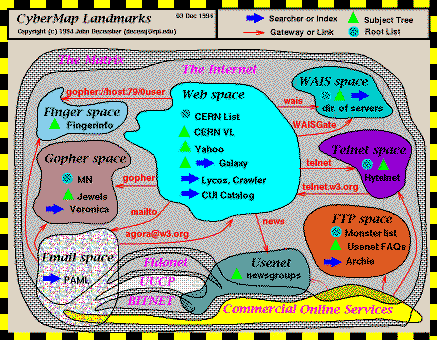
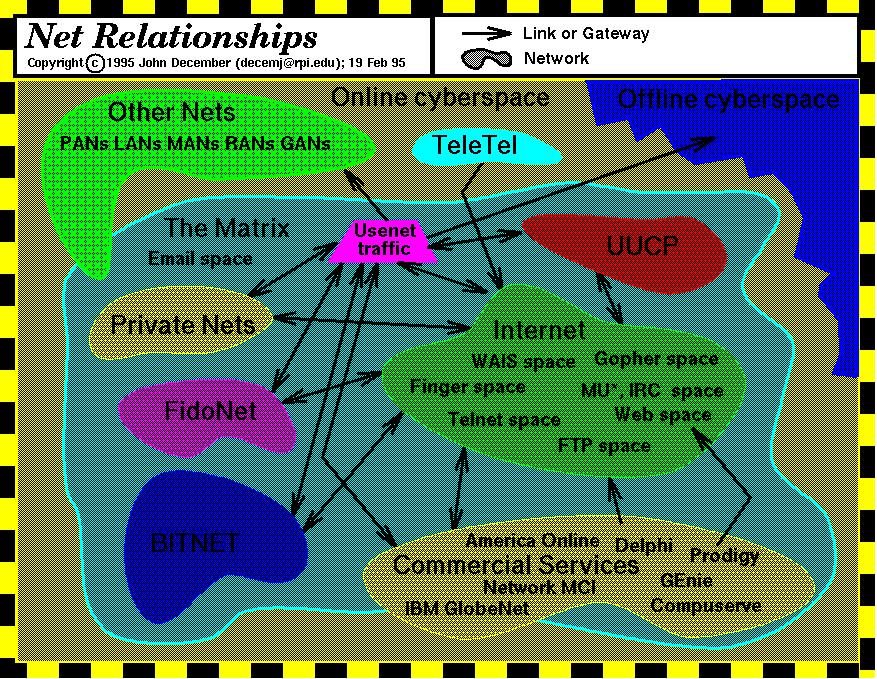
- https://www.kitchin.org/wp-content/uploads/2019/04/BSoC-2002.pdf
- Au souvenir des /Cyclades et autres réseaux émergeants

C'est pour moi (1/2/3. topologie/vue du dessus) l'anti- iceberg .
L'époque où le "online" était un cas particulier...
Une {bulle} suivant https://liens.vincent-bonnefille.fr/?tRE0_g
( sur la durée de vie des protocoles aux petits oignons )
Vous pouvez aussi aller voir l'Atlas Critique (et contemporain, et magnifique) de @Louise_Drulhe
https://liens.vincent-bonnefille.fr/?Rv_BMw
via : https://www.centreforthestudyof.net/?p=6029 @CSNI
{ today 2021 }
" The project Critical Tracing and The Post-Photographic Image explores how images move across infrastructures. In this context, we propose a two-days workshop to approach the digital image as a transactional device that we can use to trace the infrastructure through which it circulates. "
" In 20th century photographic history and criticism the notion of trace has consistently been associated with the medium's mechanical reproducibility and its indexical relationship to reality. Yet, with the ubiquitous adoption of digital technology, photography has moved away from the singularity of the analogue medium towards a networked technology with a computational structure. Hence the question arises: How can the concept of trace and the act of tracing be reframed to account for images' algorithmic structure and their circulatory patterns amongst different contexts of reception? "
" What are the aesthetic and political implications of foregrounding such notions when rethinking parameters of production, dissemination and interpretation of networked images ? "
" Once images ceased to be perceived primarily as visual surfaces but as a vectors of relations, the notion of infrastructure gains importance, as an essential concept for framing image practices as inseparable from their materiality. Our objective is to study how infrastructure permeates our concepts and ideas about the post-photographic image. We believe that infrastructure cannot be taken for granted and tracing requires different strategies according to the materialities through which images circulate under different geopolitical and socio-technical conditions. "
Via Telegram
@Nestor_Siré in the audiance-intervenant #<3
@Anaïs_Bloch ( réparation_maintenance périphériques_devices hack )
https://www.hesge.ch/head/projet/mobile-repair-cultures-reparation-informelle-linnovation-silencieuse-cas-des-smartphones
Instantly share images, videos, PDFs, and links with people nearby. Peer2Peer and Open Source. No Setup, No Signup.
git = https://github.com/RobinLinus/snapdrop
--
L'outil est léger et intuitif pour envoyer des données entre vos appareils connectés au même réseau wifi
J'ai bien envie d'en avoir une version en self_host_hébergement
très pratique pour éviter de passer par des services tiers
gardant peut-être, sûrement trace de vos données
----
alternativeto
Permet la création de liens à distance (non LAN)
(partage entre ami.e.s sur Internet)
https://www.sharedrop.io
https://www.libhunt.com/compare-snapdrop-vs-sharedrop
Cool too p2p
https://wormhole.app
"Ou Création d’un lecteur et exécuteur de QR Codes pour se faire un assistant personnel Le principe est de réaliser une sorte d’assistant personnel mais sans le recours à un assistant personnel vocal afin de ne pas être écouté en Continuer la lecture Utiliser un Raspberry Pi pour exécuter des taches de manière semi-automatique par QR Codes→"
-- aujourd'hui j'ai mis un place un lecteur de qrcode sur ma raspberrypi en suivant ce tuto
-- But affiché, passer du text plus simplement entre mes périphériques_devices quand ils sont horsligne_offline_invisible
Et vu l'engoument pour les qrcode surveillants, limites d'accès et de droit (d'execution) je me suis dit qu'un tel outil serait utile, surement (à la création ou écriture autour de cet objet de plus en plus commun et banal).
L'occasion aussi pour moi de me confronter à un peu de python et de me rendre compte que ce n'est vraiment pas si compliqué (que ce que j'avais bien voulu imaginer pour me faire peur) 😨
How I learned to start worrying and love privacy anonymity
ressources en masse sur les questions de sécurité (en anglais)
https://web.archive.org/web/*/https://anonymousplanet.org/guide.html
- Some low-tech old-school tricks:
-
Understanding some basics of how some information can lead back to you and how to mitigate some:
- Your Network:
Your IP address:
Your DNS and IP requests:
Your RFID enabled devices:
The Wi-Fi and Bluetooth devices around you:
Malicious/Rogue Wi-Fi Access Points:
Your Anonymized Tor/VPN traffic:
- Your Network:
Your Cryptocurrencies transactions:
Your Cloud backups/sync services:
Your Browser and Device Fingerprints:
-
The Tails route:
Tor Browser settings on Tails:
Persistent Plausible Deniability using Whonix within Tails: -
The Qubes Route:
Pick your connectivity method:
Getting an anonymous VPN/Proxy: -
Creating your anonymous online identities:
- Understanding the methods used to prevent anonymity and verify identity:
Captchas:
Phone verification:
E-Mail verification:
User details checking:
Proof of ID verification:
IP Filters:
- Understanding the methods used to prevent anonymity and verify identity:
-
Getting Online:
Creating new identities:
Checking if your Tor Exit Node is terrible:
The Real-Name System:
Workshop 2019
https://pivilion.net/2019-workshop/
https://pivilion.net/tag/rpi/ 2020
via : https://schloss-post.com/art-dark-net/ ( @Schloss_Post interview_conférence )
On y voit un environnement_desktop de recherche_création en atelier_workshop / cours ...
Une exposition des terminaux ( cli_bash ) : une résidence
ça code : @Dina_Karadžić et @Vedran_Gligo
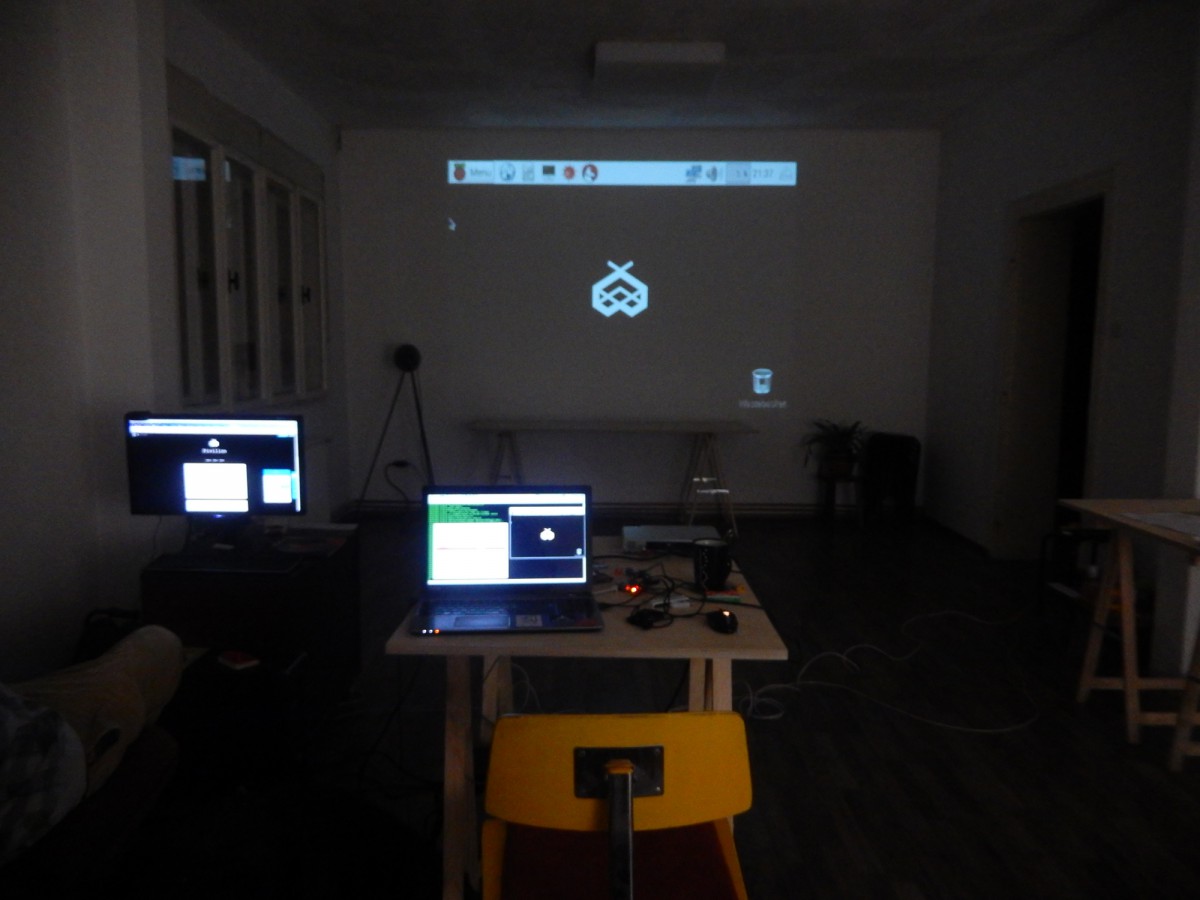
Pivilion is a decentralizing open source darknet web server project and gallery management software for the creation of autonomous & uncensored digital media art online galleries. It runs on low cost Raspberry Pi hardware and is built on top of Raspbian GNU/Linux with a server and Tor networking built in, utilizing the Tor network to host exhibitions out of the box.
Each Pivilion device receives a Tor onion domain automatically the first time it’s activated. The system provides the user with a CMS for publishing multimedia or websites within a gallery. It’s designed so that the author-curator can use any network (even public networks behind firewalls) to host an online exhibition.
via : https://schloss-post.com/the-first-schlosspost-web-residents/
Install Readme Git
https://gitlab.com/hacklab01/pivilion/-/wikis/pivilion-manual-setup
Ressemble à une adhoc_piratebox
DEAD #.onion : http://pivilionumi6b3kg.onion/pavilion
org https://hacklab01.org #<3 glitch aesthetique_goût hack
+) https://thewrong.org
Hier je citais https://www.gwern.net/Sidenotes #<3
( à la recherche d'un converter ou moyen de transformer des ndbp notes de bas de pages md en notes marginales. Ca avait été un demi échec autour de ma proposition de blog il y a 7 ans. Un wordpress peu performant... mais à coup de css j'y était arrivé :
http://news.vincent-bonnefille.fr/
Les sidenotes sont partout, du site en édition_publication Cairn, à des plateformes comme médium... d'autres les intègres par popup tel wikipédia ...
Du coup en passant à dendron et l'écriture programmative, sortant du joux de Microsoft Word et la rigidité de GUI, je cherche une solution intégrée côté interface de mon site (dendron sur git) de recherche-notes.
J'explique à mon tour les motivations de mise en place d'un tel ensemble d'outils (README)... d'où les bulles récentes postées ici.
Mais Pandoc n'est pas qu'un enfant de coeur, je gallère un peu.
Cet article fait l'état des lieux sur des alternativeto aux sidenotes et logiciels-sites de créationsécriture collective... et devellope sa propre solution
...avec Deadalus https://github.com/iTXTech/Daedalus .
Configurez android (sans Root) pour accéder à vos site web hébergés localement (LAN)... modification du fichier Hosts (temporaire entant que VPN) permettant de modifier la façon dont une requête web est dirigée vers un serveur. Utile pour bloquer des publicités (comme Adblock) en pointant le contenu de ces sites (pub hébergées sur un serveur) vers un trou noir, dans le vide (par exemple).
J'ai aussi testé la solution payante et moins complète HostsGo qui n'avait pas autant d'options. Ce tuto explique comment utiliser Pastebin comme serveur de vos règles DNS (permet de synchroniser plusieurs machines).
Permet l'utilisation d'un service DNS alternatif et l'usage de règles DNSmasq
"Le jeu défini par le Générateur poïétique* se déroule à l’intérieur d’une matrice à deux dimensions comme les jeux de tabliers et son principe s'inspire de celui du jeu_de_la_vie et des cadavres exquis des surréalistes. Le Générateur poïétique s’écarte néanmoins de ces modèles sur plusieurs points. Ce n'est pas un algorithme de type Conway, mais bien des joueurs humains qui contrôlent en temps réel les éléments graphiques de la matrice globale"
[...]
"L'appellation « Générateur poïétique », qui dérive du concept d'autopoïèse** en sciences du vivant, et de celui de poïétique* en philosophie de l'art, traduit le processus d’auto-organisation à l’œuvre dans l'émergence continue de l'image globale. Depuis son origine, le Générateur poïétique a été conçu par son auteur comme un élément d'une recherche-action*** [...]"
* https://fr.wikipedia.org/wiki/Poïétique
** https://fr.wikipedia.org/wiki/Autopoïèse
*** https://fr.wikipedia.org/wiki/Recherche-action
->> Recherche-action
"La recherche-action (ou recherche-intervention, ou encore recherche-expérimentation) est une démarche et une méthodologie de recherche scientifique qui vise à mener en parallèle et de manière intriquée l'acquisition de connaissances scientifiques et des actions concrètes et transformatrices sur le terrain."
----
::::: en image gif 2000 https://commons.wikimedia.org/wiki/File:Générateur_Poïétique._Enregistrment_d'une_expérience_sur_le_web,_festival_X-00_(2000).gif?uselang=fr
:::::: pour participer en ligne
http://play.poietic-generator.net/session/haccvalgrqdwiguo/draw
@Aram_Bartholl 2010
blog :
https://arambartholl.com/blog/dead-drops-preview/
map :
https://deaddrops.com/db/
"I am pleased to preview ‘Dead Drops’ a new project which I started off as part of my ongoing EYEBEAM residency in NYC the last couple weeks. ‘Dead Drops’ is an anonymous, offline, peer to peer file-sharing network in public space. I am ‘injecting’ USB flash drives into walls, buildings and curbs accessable to anybody in public space. You are invited to go to these places (so far 5 in NYC) to drop or find files on a dead drop. Plug your laptop to a wall, house or pole to share your favorite files and data. Each dead drop contains a readme.txt file explaining the project. ‘Dead Drops’ is still in progress, to be continued here and in more cities. Full documentation, movie, map and ‘How to make your own dead drop’ manual coming soon! Stay tuned."
"Can you hear me?"
Hello NSA , hello GCHQ. Berlin speaking here.
¥ Antennas on the Academy of Arts in Berlin
Messages can be sent to the intelligence agencies on the frequencies that are intercepted by the NSA and GCHQ. An independent mesh network in Berlin's Government District recaptured the virtual communication space. A collective conversation space in which all have equal rights has been taking the space of secret wiretapping.
http://www.statemachines.eu/projects/708/
http://www.statemachines.eu/projects/708/ =
AN ARCHEOLOGY OF SILENCE IN THE DIGITAL AGE
“I have not tried to write the history of that language (A/N the language of psychiatry) but, rather, the archeology of that silence.”
M. Foucault, Madness and Civilization, 1961
Artists @Christoph_Wachter and @Mathias_Jud have been paying special attention to the different forms of silence that prevail on the Internet. With their work, they aim to undermine power structures while also developing tools and systems of communication for those in need. They uncover network mechanisms, expose cases of censorship and surveillance, and embrace infrastructural literacy as a response to the dominance of today’s network ( 2017 )
Via https://www.wachter-jud.net/Can-you-hear-me.html?r9t_locale=en
Au programme de @State_Machines ( thématique_revue ) ...
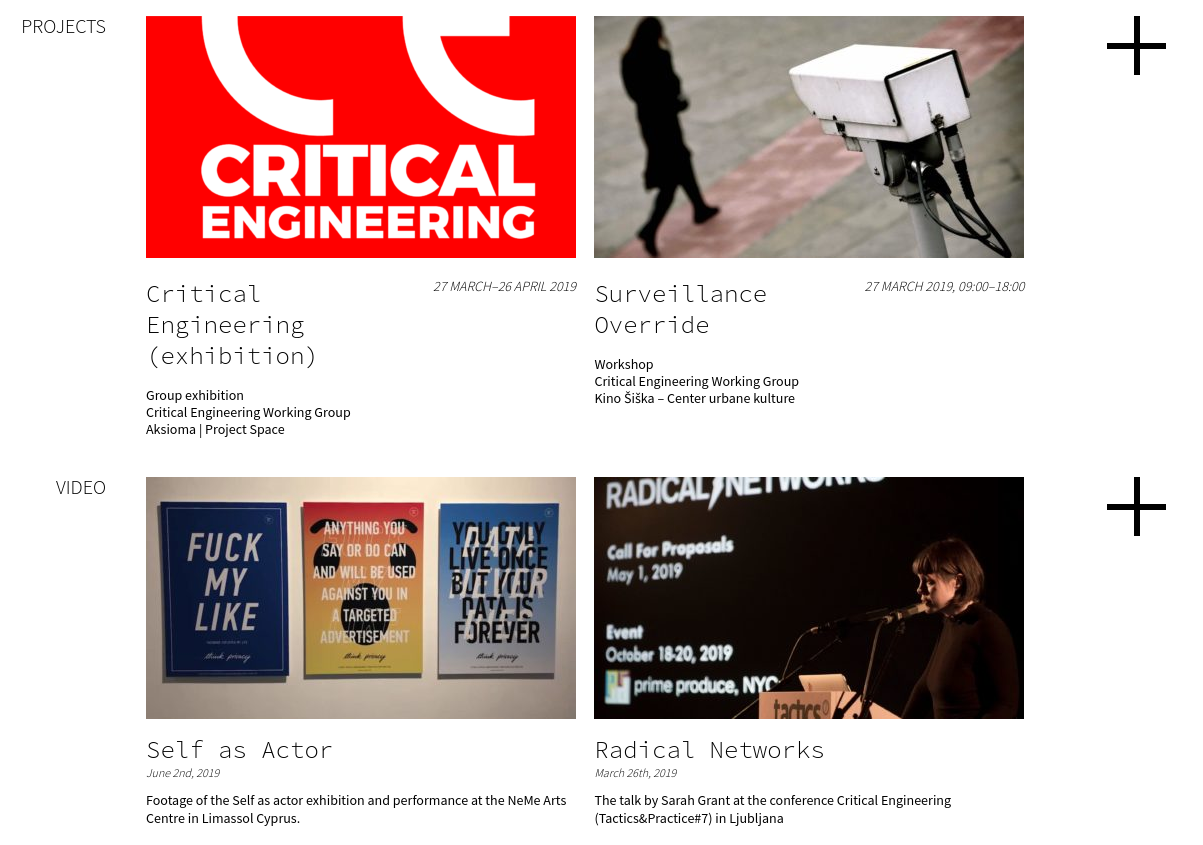
0n retrouve : @The_Critical_Engineering_Working_Group et @Aksioma #<3
Newstweek is a device for manipulating news read by other people on wireless hotspots. Built into a small and innocuous wall plug, the Newstweek device appears part of the local infrastructure, allowing writers to remotely edit news read on wireless devices without the awareness of their users. 2011
Newstweek was developed by @Julian_Oliver and @Danja_Vasiliev ( membres du @The_Critical_Engineering_Working_Group )
// Newstweek project page: http://newstweek.com
http://web.archive.org/web/20170804214357/http://newstweek.com/
@Vox reportage
In Cuba there is barely any internet. Anything but the state-run TV channels is prohibited. Publications are limited to the state-approved newspapers and magazines. This is the law. But, in typical Cuban fashion, the law doesn't stop a vast underground system of entertainment and news media distributors and consumers.
- On le retrouve dans le Cinéma Pirate Book :
http://thepiratebook.net/el-paquete-semanal-cuba/
